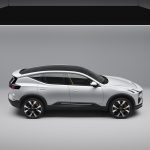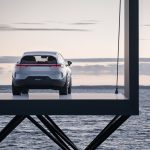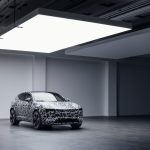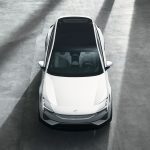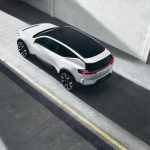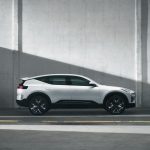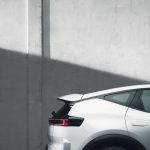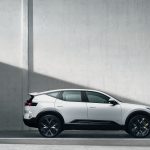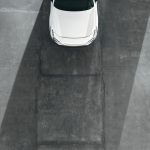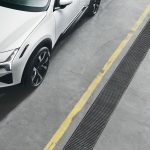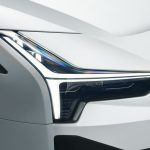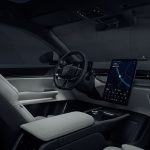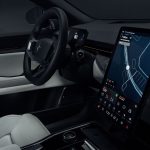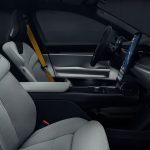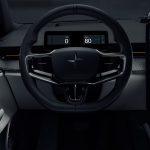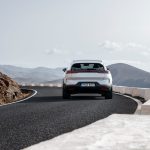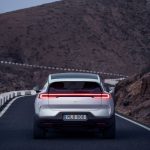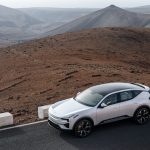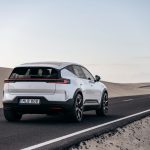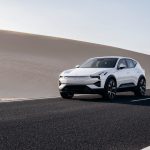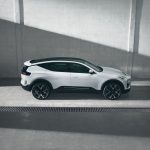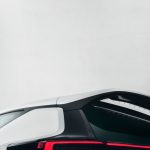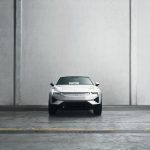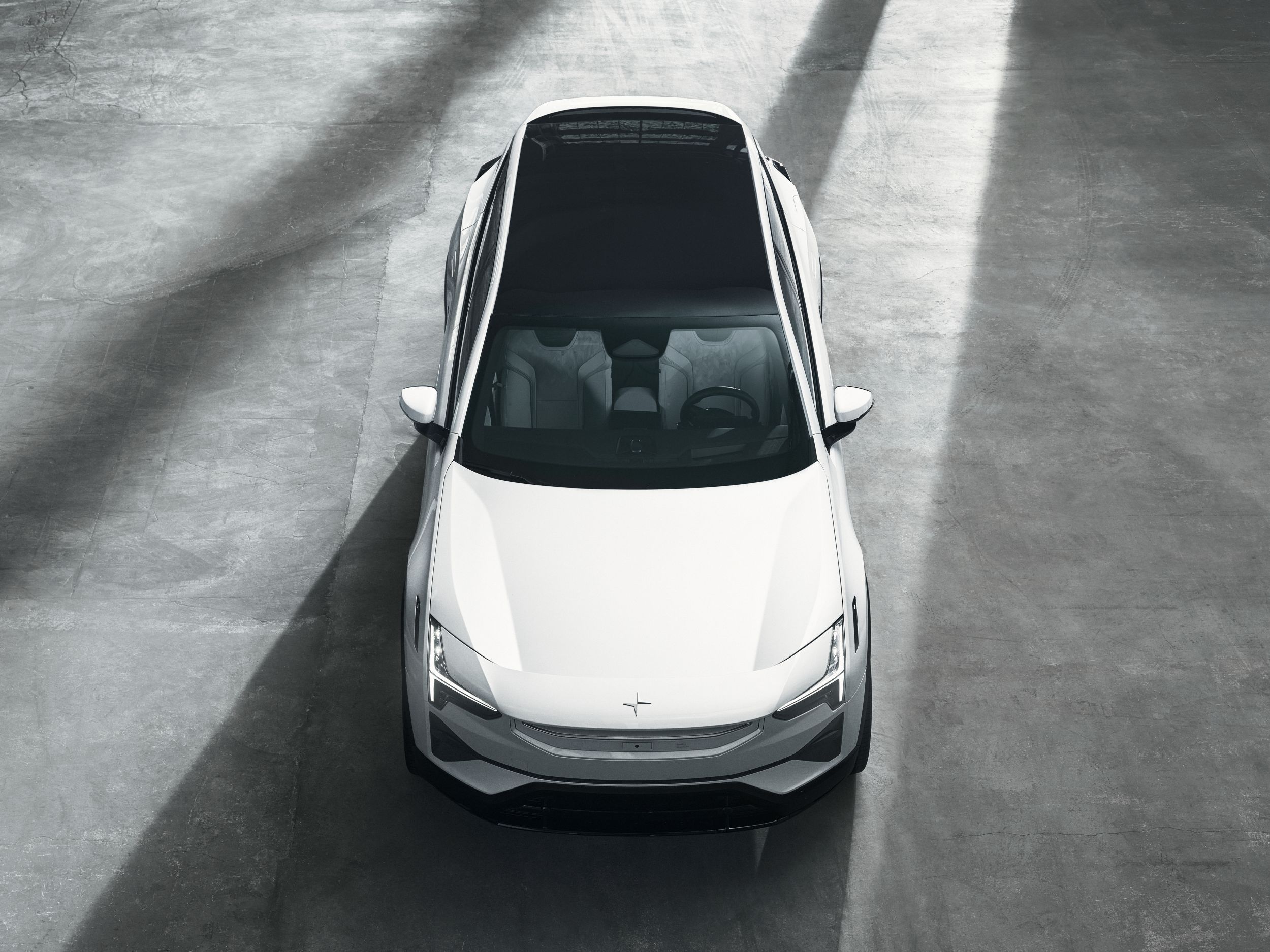
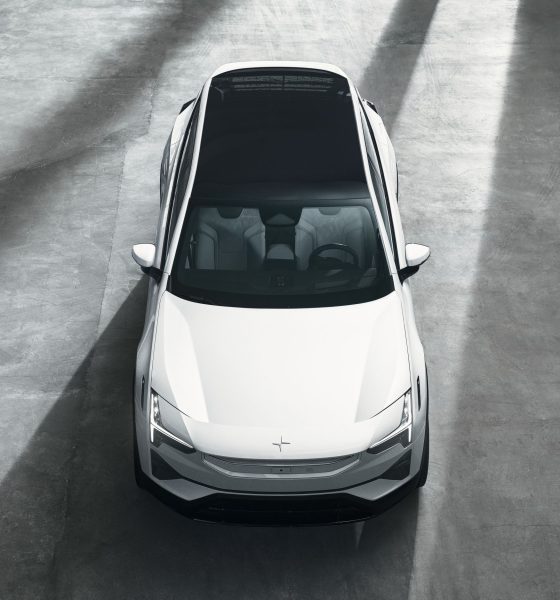
News
Polestar 3 all-electric SUV unveiling: 379-mile WLTP range, 517 horsepower, 111 kWh battery
Polestar has unveiled its all-electric SUV, named the Polestar 3, aiming to enter a highly-competitive market and outpoint potential competitors with comparable offerings, including Tesla, Ford, Rivian, and others. Electric vehicle offerings are becoming more plentiful, and Polestar is attempting to capture a considerable portion of the market by offering a quality design, comparative performance, and a competitive range rating.
Polestar launched the Polestar 3 on Wednesday at an unveiling event held in Copenhagen, Denmark. Owned by Geely Motors and Volvo, Polestar has offered the Polestar 2 for nearly two years, with the 4, 5, and 6 vehicles all currently under development. The automaker has shared the Polestar 3 concept images on several occasions, but this is the first time people are seeing the launch of the vehicle directly from the company in a live setting.
“Polestar 3 reimagines the SUV through premium electric performance and innovative, sustainable technology. Changing the automotive landscape while keeping the environment a priority,” Polestar describes the vehicle on its website.
Built in the United States for U.S. Customers
There’s been a lot of talk about electric vehicles and production inside the United States as the Biden Administration has launched several large bills to incentivize not only domestic EV production but also the purchase of EVs by consumers. However, Polestar committed long ago to building the Polestar 3 in the United States, committing to the strategy in June 2021.
- Credit: Polestar
- Credit: Polestar
- Credit: Polestar
“We will build in America for Americans,” Polestar CEO Thomas Ingenlath said last year. “Polestar 3 is planned to be launched in 2022 as a premium electric performance SUV that will define the look of SUVs in the electric age. It will also be the first Polestar vehicle to be built in America.”
The Polestar 3 will be built at the Volvo Cars plant in Charleson, South Carolina, and is intended to be one of the most climate-responsible cars ever built.
“Polestar 3 is a powerful electric SUV that appeals to the senses with a distinct, Scandinavian design and excellent driving dynamics,” Ingenlath, said while reaffirming Polestar’s plans to build the car in the U.S. “It takes our manufacturing footprint to the next level, bringing Polestar production to the United States. We are proud and excited to expand our portfolio as we continue our rapid growth.”
- Credit: Polestar
- Credit: Polestar
- Credit: Polestar
- Credit: Polestar
- Credit: Polestar
- Credit: Polestar
- Credit: Polestar
- Credit: Polestar
Next-Gen EV Architecture crafted by Volvo
The Polestar 3 has been Volvo’s introduction to the development of EV architecture. Polestar said the Polestar 3’s new, next-generation architecture has been designed from scratch for full electrification. Supported by Google’s Android Automotive OS infotainment system and featuring high-end, safety-focused autonomous driving features, Polestar intends to launch state-of-the-art and completely unique EV tech, starting with the Polestar 3 in specific.
Focusing on safety and ADAS tech in the Polestar 3
Polestar 3 offers five radar modules, five external cameras, and twelve ultrasonic sensors, enabling advanced safety features. The SmartZone and front aero wing continuously collect information through forward-facing sensors, a heated radar module, and camera. Polestar now says that this is a “signature” of the company’s design.
In the cabin, Polestar has two closed-loop driver monitoring cameras that will track the driver’s eyes to emphasize safer driving. “The cameras monitor the driver’s eyes and can trigger warning messages, sounds and even an emergency stop function when detecting a distracted, drowsy or disconnected driver,” Polestar said.
- Credit: Polestar
- Credit: Polestar
- Credit: Polestar
- Credit: Polestar
111 kWh battery pack, 379-mile WLTP-rated range, heat pump
Polestar 3 will pack a 111 kWh battery pack offering a generous but preliminary range rating of 379 miles rated by the WLTP. Expect this number to be lower when the EPA tests the vehicle, which has not happened quite yet, according to the agency’s Vehicle Database.
Polestar’s 111 kWh battery pack features prismatic cells housed in a protective aluminum case, reinforced by boron steel and liquid cooling. Polestar also made a heat pump standard on the Polestar 3, helping with efficiency and range degradation, especially in colder climates.
- Credit: Polestar
- Credit: Polestar
- Credit: Polestar
- Credit: Polestar
- (Credit: Polestar)
- Credit: Polestar
- Credit: Polestar
- Credit: Polestar
Polestar 3 Order Availability, optional Pilot Pack with LiDAR from Luminar
Polestar said the Polestar 3 will be available for order today. Polestar 3 orders with an optional Pilot Pack with LiDAR from Luminar will be available from Q2 2023. This package adds a supplemental control unit from NVIDIA, three more cameras, four ultrasonic sensors, and cleaning for both front and rear-view cameras. “This enables enhanced 3D scanning of the car’s surroundings in greater detail and helps prepare the car for autonomous driving,” Polestar said.
Production to begin in China, Q4 2023 Deliveries
Initial production will start at Volvo’s facility in Chengdu, China, in an incremental ramp-up phase, Polestar said, which is set to begin in mid-2023. Its launch price is €89,990 ($87,110). The first deliveries will take place in Q4 2023.
Volvo’s Ridgeville, South Carolina facility will build the vehicle to supply North American and other markets. Production will switch from China to the United States, and initial deliveries of units produced in South Carolina will begin in mid-2024.
I’d love to hear from you! If you have any comments, concerns, or questions, please email me at joey@teslarati.com. You can also reach me on Twitter @KlenderJoey, or if you have news tips, you can email us at tips@teslarati.com.

News
Tesla FSD’s newest model is coming, and it sounds like ‘the last big piece of the puzzle’
“There’s a model that’s an order of magnitude larger that will be deployed in January or February 2026.”

Tesla Full Self-Driving’s newest model is coming very soon, and from what it sounds like, it could be “the last big piece of the puzzle,” as CEO Elon Musk said in late November.
During the xAI Hackathon on Tuesday, Musk was available for a Q&A session, where he revealed some details about Robotaxi and Tesla’s plans for removing Robotaxi Safety Monitors, and some information on a future FSD model.
While he said Full Self-Driving’s unsupervised capability is “pretty much solved,” and confirmed it will remove Safety Monitors in the next three weeks, questions about the company’s ability to give this FSD version to current owners came to mind.
Musk said a new FSD model is coming in about a month or two that will be an order-of-magnitude larger and will include more reasoning and reinforcement learning.
He said:
“There’s a model that’s an order of magnitude larger that will be deployed in January or February 2026. We’re gonna add a lot of reasoning and RL (reinforcement learning). To get to serious scale, Tesla will probably need to build a giant chip fab. To have a few hundred gigawatts of AI chips per year, I don’t see that capability coming online fast enough, so we will probably have to build a fab.”
NEWS: Elon Musk says FSD Unsupervised is “pretty much solved at this point” and that @Tesla will be launching Robotaxis with no safety monitors in about 3 weeks in Austin, Texas. He also teased a new FSD model is coming in about 1-2 months.
“We’re just going through validation… https://t.co/Msne72cgMB pic.twitter.com/i3wfKX3Z0r
— Sawyer Merritt (@SawyerMerritt) December 10, 2025
It rings back to late November when Musk said that v14.3 “is where the last big piece of the puzzle finally lands.”
With the advancements made through Full Self-Driving v14 and v14.2, there seems to be a greater confidence in solving self-driving completely. Musk has also personally said that driver monitoring has been more relaxed, and looking at your phone won’t prompt as many alerts in the latest v14.2.1.
This is another indication that Tesla is getting closer to allowing people to take their eyes off the road completely.
Along with the Robotaxi program’s success, there is evidence that Tesla could be close to solving FSD. However, it is not perfect. We’ve had our own complaints with FSD, and although we feel it is the best ADAS on the market, it is not, in its current form, able to perform everything needed on roads.
But it is close.
That’s why there is some legitimate belief that Tesla could be releasing a version capable of no supervision in the coming months.
All we can say is, we’ll see.
Investor's Corner
SpaceX IPO is coming, CEO Elon Musk confirms
However, it appears Musk is ready for SpaceX to go public, as Ars Technica Senior Space Editor Eric Berger wrote an op-ed that indicated he thought SpaceX would go public soon. Musk replied, basically confirming it.

Elon Musk confirmed through a post on X that a SpaceX initial public offering (IPO) is on the way after hinting at it several times earlier this year.
It also comes one day after Bloomberg reported that SpaceX was aiming for a valuation of $1.5 trillion, adding that it wanted to raise $30 billion.
Musk has been transparent for most of the year that he wanted to try to figure out a way to get Tesla shareholders to invest in SpaceX, giving them access to the stock.
He has also recognized the issues of having a public stock, like litigation exposure, quarterly reporting pressures, and other inconveniences.
However, it appears Musk is ready for SpaceX to go public, as Ars Technica Senior Space Editor Eric Berger wrote an op-ed that indicated he thought SpaceX would go public soon.
Musk replied, basically confirming it:
As usual, Eric is accurate
— Elon Musk (@elonmusk) December 10, 2025
Berger believes the IPO would help support the need for $30 billion or more in capital needed to fund AI integration projects, such as space-based data centers and lunar satellite factories. Musk confirmed recently that SpaceX “will be doing” data centers in orbit.
AI appears to be a “key part” of SpaceX getting to Musk, Berger also wrote. When writing about whether or not Optimus is a viable project and product for the company, he says that none of that matters. Musk thinks it is, and that’s all that matters.
It seems like Musk has certainly mulled something this big for a very long time, and the idea of taking SpaceX public is not just likely; it is necessary for the company to get to Mars.
The details of when SpaceX will finally hit that public status are not known. Many of the reports that came out over the past few days indicate it would happen in 2026, so sooner rather than later.
But there are a lot of things on Musk’s plate early next year, especially with Cybercab production, the potential launch of Unsupervised Full Self-Driving, and the Roadster unveiling, all planned for Q1.
News
Tesla adds 15th automaker to Supercharger access in 2025
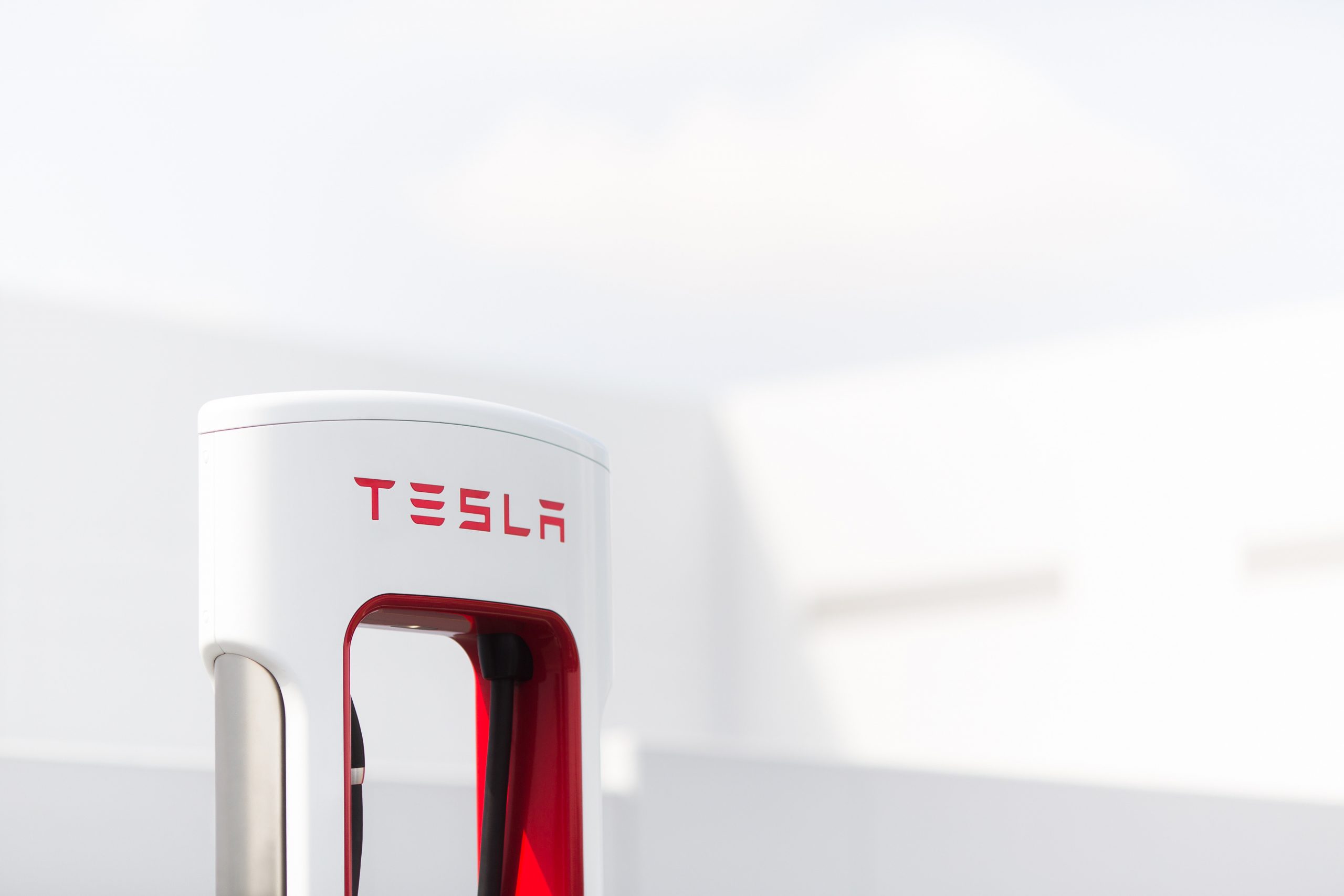
Tesla has added the 15th automaker to the growing list of companies whose EVs can utilize the Supercharger Network this year, as BMW is the latest company to gain access to the largest charging infrastructure in the world.
BMW became the 15th company in 2025 to gain Tesla Supercharger access, after the company confirmed to its EV owners that they could use any of the more than 25,000 Supercharging stalls in North America.
Welcome @BMW owners.
Download the Tesla app to charge → https://t.co/vnu0NHA7Ab
— Tesla Charging (@TeslaCharging) December 10, 2025
Newer BMW all-electric cars, like the i4, i5, i7, and iX, are able to utilize Tesla’s V3 and V4 Superchargers. These are the exact model years, via the BMW Blog:
- i4: 2022-2026 model years
- i5: 2024-2025 model years
- 2026 i5 (eDrive40 and xDrive40) after software update in Spring 2026
- i7: 2023-2026 model years
- iX: 2022-2025 model years
- 2026 iX (all versions) after software update in Spring 2026
With the expansion of the companies that gained access in 2025 to the Tesla Supercharger Network, a vast majority of non-Tesla EVs are able to use the charging stalls to gain range in their cars.
So far in 2025, Tesla has enabled Supercharger access to:
- Audi
- BMW
- Genesis
- Honda
- Hyundai
- Jaguar Land Rover
- Kia
- Lucid
- Mercedes-Benz
- Nissan
- Polestar
- Subaru
- Toyota
- Volkswagen
- Volvo
Drivers with BMW EVs who wish to charge at Tesla Superchargers must use an NACS-to-CCS1 adapter. In Q2 2026, BMW plans to release its official adapter, but there are third-party options available in the meantime.
They will also have to use the Tesla App to enable Supercharging access to determine rates and availability. It is a relatively seamless process.
